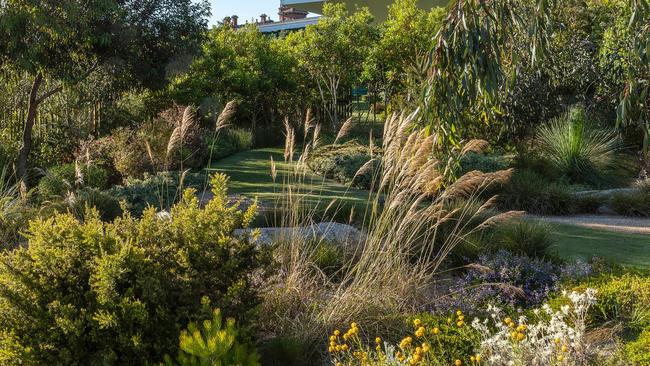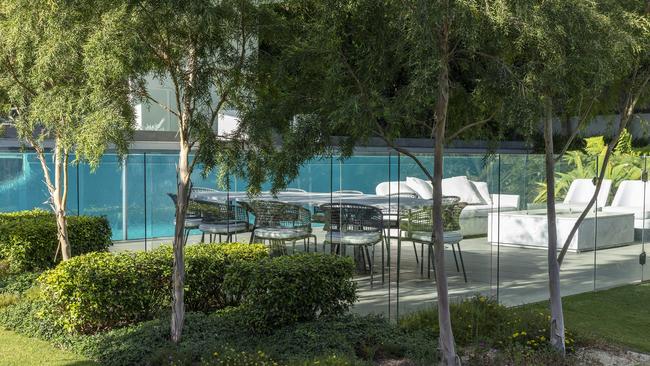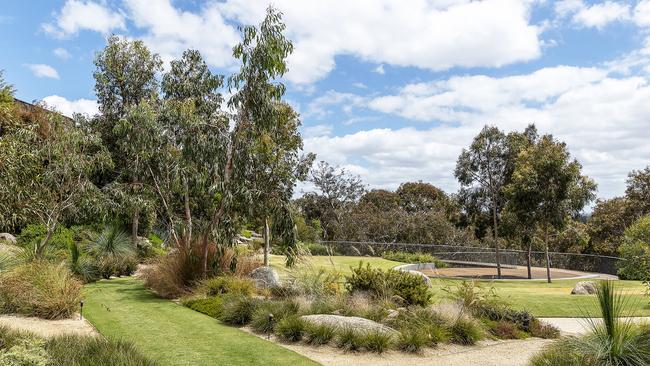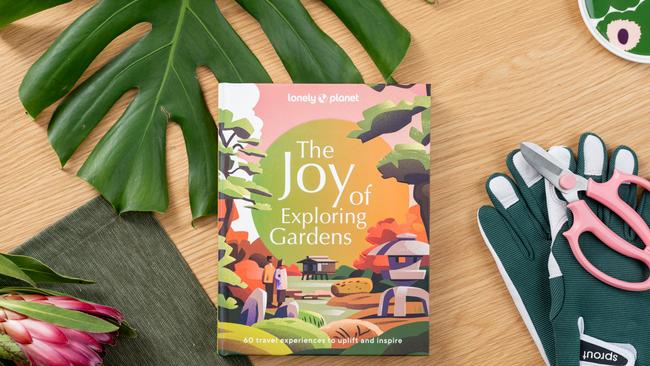‘The planting is like a musical composition’: inside TCL and Paul Thompson’s grand Melbourne garden
Step inside and enjoy the perfect harmony of this grand Melbourne garden whose designer likens the plant selection to a chorus.

‘The brief was simple: make us a beautiful garden to enjoy,” says landscape architect Scott Adams, describing this project at one of Melbourne’s grand properties. “It was unique in terms of its scale and context.”
The contemporary native garden, covering half the 2ha family seat, was a collaboration between leading Australian landscape architects TCL (Taylor Cullity Lethlean) and renowned native plant designer Paul Thompson, the same team responsible for the iconic Australian Garden at the Royal Botanic Gardens Cranbourne. Designed as a family garden with scope for larger scale entertaining, it was recently a Gardens finalist in the 2023 Houses Awards.
The new garden is an extension of the Victorian-era landscape surrounding the heritage-listed Italianate mansion and its modern addition. It includes a formal upper garden close to the house and a lower, informal garden to the north, which seamlessly connects with the wider Yarra Valley landscape. Although the upper garden responds to the formality of the house, it is a contemporary take on formal, using purely Australian natives.

“The planting is like a musical composition,” Adams explains. “There’s a chorus of plants chosen to hold the garden together with pattern and regularity, and then there are highlights of colour, texture and seasonal display.” A banded series of low “hedges” uses a diverse mix including dwarf lillypilly (Acmena ‘Allyn Magic’), nodding geebung (Persoonia nutans), lemon-scented myrtle (Darwinia citriodora prostrate) and round-leafed tea tree (Leptospermum rotundifolium prostrate), with bands of ferns such as Blechnum nudum and Microsorum diversifolium, and strappy-leafed plants including dwarf paroo lily (Dianella ‘Tiny Titan’) and several species of mat rush (Lomandra). Informal groupings of silver weeping tea tree (Leptospermum brachyandrum) form an artfully shaped canopy above. The site narrows in the middle, marking a transition to the lower garden.
“Passing through that narrow waist, the landscape opens up to the larger, informal native garden that overlooks and borrows from the broader horizon of the river valley,” says Adams. At its heart is a large, circular deck that captures views across the river, surrounded by a broad sweep of lawn that provides ample space for family and social gatherings, as well as performances. Surrounding this core, the rest of the garden was designed as a natural landscape to walk through, with the entire area mulched with local granitic gravel rather than having many defined pathways.

Clusters of huge granite boulders appear to be natural but were brought in and meticulously placed, while the serpentine grass path was added to provide a comfortable walking or jogging journey through the garden.
The plants are a mix of local species that blend with the broader landscape, with selected plants to offer colour contrasts in foliage and flowers, creating a visually rich and biodiverse garden. Thompson and Adams were also conscious of water consumption, climate and durability in making their plant selections.
Adams acknowledges the important contribution made by the head gardener and her team, both in the planning stages and in their meticulous maintenance of the garden.
“Their commitment and dedication plays a big part in the garden’s success.”
Q&A
My huge potted begonia still has beautiful red flowers but the leaves are dropping daily, making it look bare. What should I do?
Sue Beilby, Adelaide
Shrubby and cane begonias can drop leaves in winter, or when they’re too dry or wet. Some, including ‘Bonfire’ (Begonia boliviensis), can die right back in winter. They benefit from pruning at least once a year, either in early spring or after a main flowering flush. You can prune them quite hard. Cuttings from the prunings will strike readily. Re-pot them every two or three
years in spring.
How can I acidify my vegetable garden soil from 7.5 to around 6.5?
Graham Lancaster, Western Australia
Sulphur acidifies soil. For a drop of one pH unit in the top 10cm of soil, apply yellow sulphur powder at a rate of 25g per square metre for sandy soil and up to 100g per square metre for clays. The pH scale is logarithmic so pH 5 is 10 times more acidic than pH 6 and 100 times more than pH 7. It can take months for the change to happen. Yates Soil Acidifier Liquid Sulfur would be faster acting, follow the label instructions. Adding organic matter helps buffer soil pH.
Can you plant prostrate grevilleas in old wheelbarrows in quality potting mix? Will they survive long term?
Chris Hogan, Brisbane
Yes and yes. Choose any of the groundcover grevilleas and they will happily trail over the edges of the barrow. Use a special native potting mix and fertiliser as grevilleas are phosphorus-sensitive. Ensure there are plenty of drainage holes in the barrow. Their lifespan is usually 10-15 years but it might be a bit shorter in a container.

Send your questions to helenyoungtwig@gmail.com. The best question for September wins two copies of Lonely Planet’s Joy of Exploring Gardens plus a pair of Sprout gloves and scissors from Annabel Trends, totalling $125. August’s winner is Trevor Sauer of Mapleton, Queensland for his question about fertilisers losing potency.








To join the conversation, please log in. Don't have an account? Register
Join the conversation, you are commenting as Logout